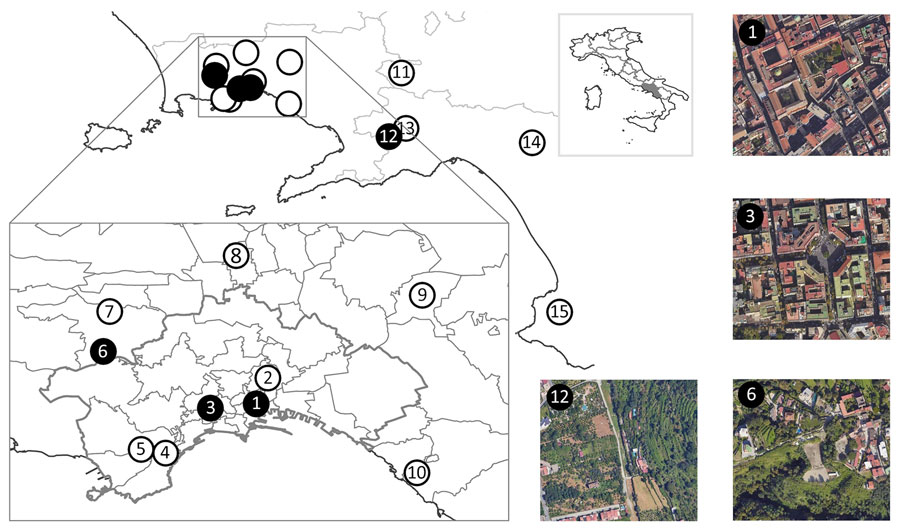Detection of Rat Lungworm (Angiostrongylus cantonensis) in Rats and Gastropods, Italy
Divakaran Pandian
1, Anna Šipková
1, Stefano Scarcelli
1, Giovanni Sgroi, Jana Kačmaříková, Francesco Buono, Elisa Castaldo, Nicola D’Alessio, Barbora Červená, Vincenzo Veneziano, and David Modrý

Author affiliation: Czech University of Life Sciences, Prague, Czech Republic (D. Pandian, D. Modrý); Masaryk University, Faculty of Science, Brno, Czech Republic (A. Šipková, D. Modrý); University of Naples Federico II, Naples, Italy (S. Scarcelli, F. Buono, E. Castaldo, V. Veneziano); Experimental Zooprophylactic Institute of Southern Italy, Portici, Italy (G. Sgroi, N. D’Alessio); University of Veterinary Sciences Brno, Brno (J. Kačmaříková, B. Červená); Institute of Vertebrate Biology, Czech Academy of Sciences, Brno (J. Kačmaříková, B. Červená); Biology Center of Czech Academy of Sciences, Institute of Parasitology, České Budějovice, Czech Republic (D. Modrý)
Main Article
Figure 1

Figure 1. Sampling locations used for detection of rat lungworm (Angiostrongylus cantonensis) in rats and gastropods, Italy. Solid black circles indicate sites from which A. cantonensis–positive samples were collected, white circles indicate A. cantonensis–negative sites; numbering corresponds to numbers in the Table. Inset at top shows region of Italy in which sampling was conducted (gray area); inset at bottom shows detailed sampling areas within Naples; outer satellite images show areas with A. cantonensis–positive samples. Detailed information on locations, including geospatial positioning coordinates, are available in Appendix 1 Table. Map images created by using Google Maps (https://www.google.com/maps), Maxar Technologies (https://www.maxar.com), and Airbus (https://www.airbus.com).
Main Article
Page created: August 08, 2025
Page updated: August 26, 2025
Page reviewed: August 26, 2025
The conclusions, findings, and opinions expressed by authors contributing to this journal do not necessarily reflect the official position of the U.S. Department of Health and Human Services, the Public Health Service, the Centers for Disease Control and Prevention, or the authors' affiliated institutions. Use of trade names is for identification only and does not imply endorsement by any of the groups named above.
